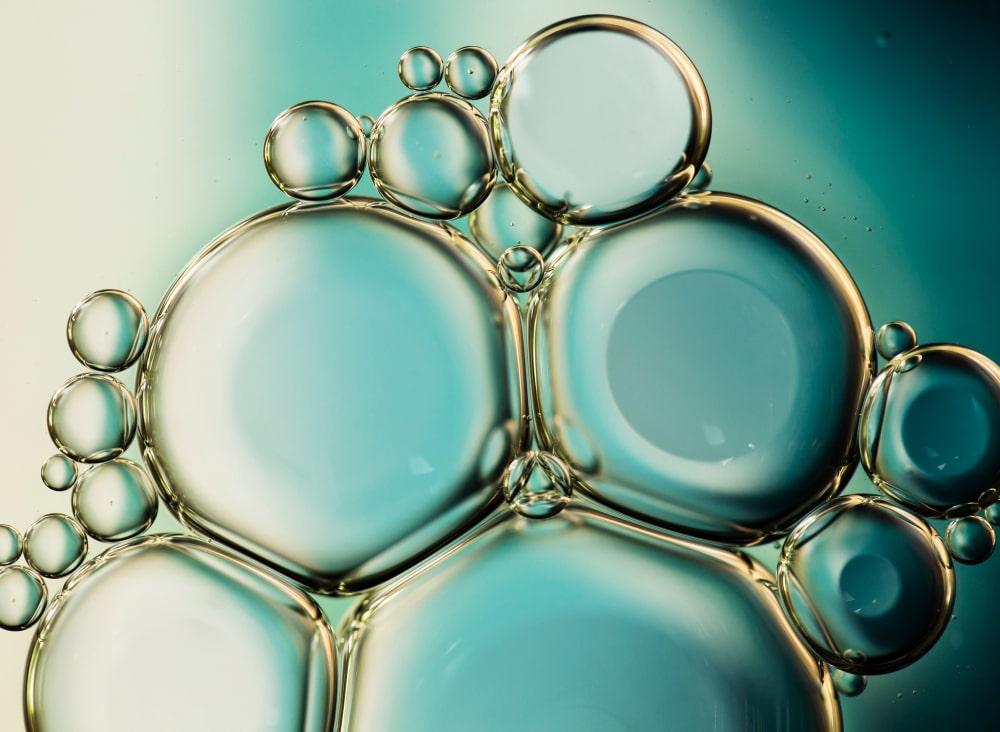Alpha hydroxyl acids, or AHAs, are a group of chemical compounds commonly used in skincare products due to their exfoliating and anti-aging properties. They work by breaking down the bonds between dead skin cells, allowing the top layer of skin to slough off and reveal fresher, brighter skin underneath. AHAs have been used for centuries, with ancient Egyptians reportedly using sour milk baths to improve the appearance of their skin.
In modern times, AHAs can be found in a wide range of skincare products, from toners to serums. Their ability to improve skin texture, minimize hyperpigmentation, reduce acne, and boost collagen production makes them a valuable addition to any skincare routine. Let’s learn about the types and benefits of AHAs!
Types of Alpha Hydroxy Acids (AHA)
1. Glycolic Acid:
Glycolic Acid is a type of Alpha Hydroxy Acid that is derived from sugar cane and is the most widely used AHA in skincare. Due to its small molecular size, it can penetrate the skin deeply, exfoliating dead skin cells and smoothing out the skin’s texture. Glycolic acid is also known for its ability to boost collagen production, leading to firmer, more supple skin. Glycolic acid can also be used to treat acne and reduce the appearance of hyperpigmentation.
2. Lactic Acid:
Lactic Acid is derived from milk and is known for its hydrating and exfoliating properties. Lactic acid works by gently dissolving the bonds between dead skin cells, revealing brighter and smoother skin. It also has a mild bleaching effect, making it an effective ingredient in products that target hyperpigmentation. When used in high concentrations, lactic acid may cause irritation and sensitivity, so it’s important to patch test and introduce it gradually into your skincare routine.
3. Citric Acid:
Citric Acid, derived from citrus fruits, acts as a natural preservative and antioxidant in skincare. It also has astringent properties, which can help minimize oiliness on the skin’s surface.
4. Tartaric Acid:
Tartaric Acid, primarily found in grapes and bananas, is known for its gentle exfoliating properties and as an antioxidant.
5. Malic Acid:
Malic Acid is derived from apples and has similar properties to other AHAs, such as exfoliation, skin brightening, and collagen-boosting.
Benefits of Alpha Hydroxy Acids (AHA)
#1 Exfoliation:
AHAs, like glycolic and lactic acid, are renowned for their exfoliating prowess. They work diligently to remove dead skin cells. This process not only enhances the texture of your skin but also helps in preventing clogged pores.
#2 Anti-Aging:
One of the most celebrated benefits of AHAs is their remarkable anti-aging properties. These acids stimulate the production of collagen, a protein crucial for maintaining skin elasticity. By boosting collagen levels, AHAs contribute to reducing the appearance of fine lines and wrinkles, leaving you with a more youthful glow.
#3 Brightens:
Bid farewell to dullness! AHAs play a pivotal role in brightening your skin by promoting cell turnover. As they encourage the shedding of old, lackluster cells, the new skin that emerges is vibrant and full of life, giving you that sought-after luminosity.
#4 Minimizes Hyperpigmentation and Dark Spots:
AHAs are champions at tackling hyperpigmentation and dark spots. By exfoliating the top layer of your skin, they help fade discoloration, leaving you with a more even skin tone.
#5 Boosts Collagen and Blood Flow:
Besides combating aging signs, AHAs work beneath the surface to enhance blood flow and collagen production. Improved circulation means your skin gets more nutrients, contributing to a healthier and more vibrant appearance.
#6 Reduces Acne:
For those grappling with acne, AHAs can be a game-changer. These acids exfoliate the skin’s surface, preventing dead cells from accumulating and clogging pores. This reduction in pore blockages can significantly decrease the likelihood of acne breakouts.
You might be interested in exploring skincare products for acne, breakouts, blemishes, scars, and hyperpigmentation. Enriched with Niacinamide, Green tea, Salicylic Acid, and various other ingredients.
#7 Smoother Skin Texture:
Say hello to silky-smooth skin! Regular use of AHAs helps refine the skin’s texture, making it smoother to the touch. The exfoliation process aids in diminishing rough patches, leaving you with consistently soft and supple skin.
How to Use AHAs?
Let’s come to the real talk already. Keep in mind the following to effectively use AHAs:
–Begin your AHA journey by easing in. Opt for a lower concentration to allow your skin time to adapt and avoid potential irritation.
–Select a well-formulated AHA product such as glycolic or lactic acid in the form of a cleanser, toner, or serum, tailored to your skin type.
–Patch Test: Prioritize safety with a patch test. Apply a small amount in an inconspicuous area to check for any adverse reactions before applying it all over your face.
-Depending on your skin’s tolerance, use AHAs 1 to 3 times a week to prevent overexfoliation and irritation.
–Incorporate AHAs into your evening routine after cleansing. This allows the acids to work undisturbed overnight.
–Post-AHA application, follow up with a hydrating moisturizer to counter potential dryness. Hydration is key in your skincare routine.
–Sun protection: Shield your skin from the sun’s rays during the day. AHAs heighten sun sensitivity, making SPF a non-negotiable step in your daytime regimen.
Final Takeaway
Alpha Hydroxy Acids (AHA) are a versatile and powerful group of skincare ingredients that can effectively exfoliate, brighten, and rejuvenate the skin. AHAs should be introduced gradually into your skincare routine and applied with caution, particularly for those with more sensitive skin. Don’t be afraid to try this wonderful skincare product and reap the benefits of glowing, healthy skin.
Alpha Hydroxy Acids (AHA) FAQ’s-
What are the side effects of AHAs?
Possible side effects include redness or dryness, so start with a patch test and monitor your skin.
What percentage of AHA is effective?
Effective AHA percentages vary, but 5-10% is common for noticeable results without excessive irritation.
Which is better AHA or retinol?
Both have benefits; AHA for exfoliation and brightening, retinol for anti-aging. Consider your specific skincare goals.

